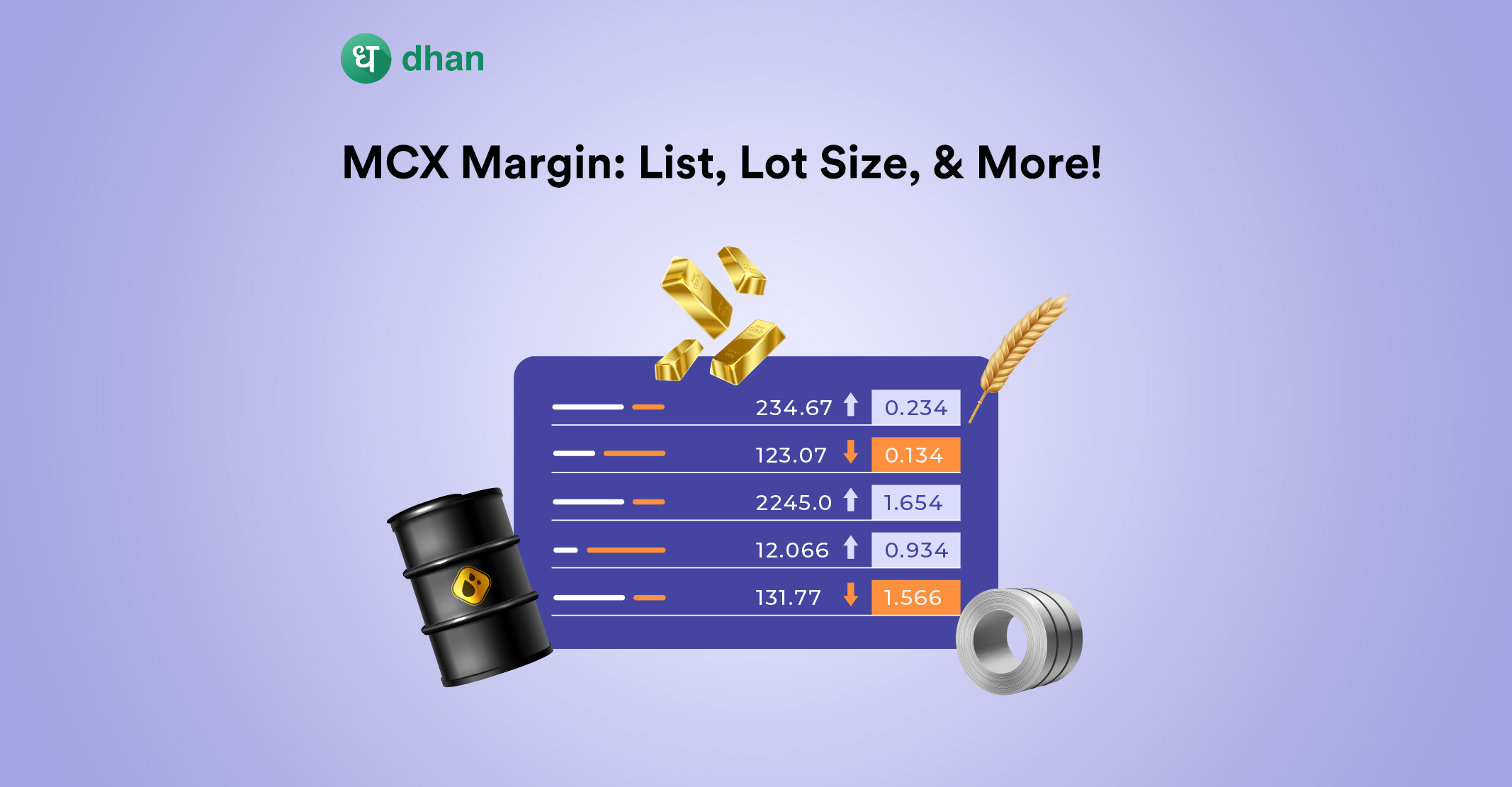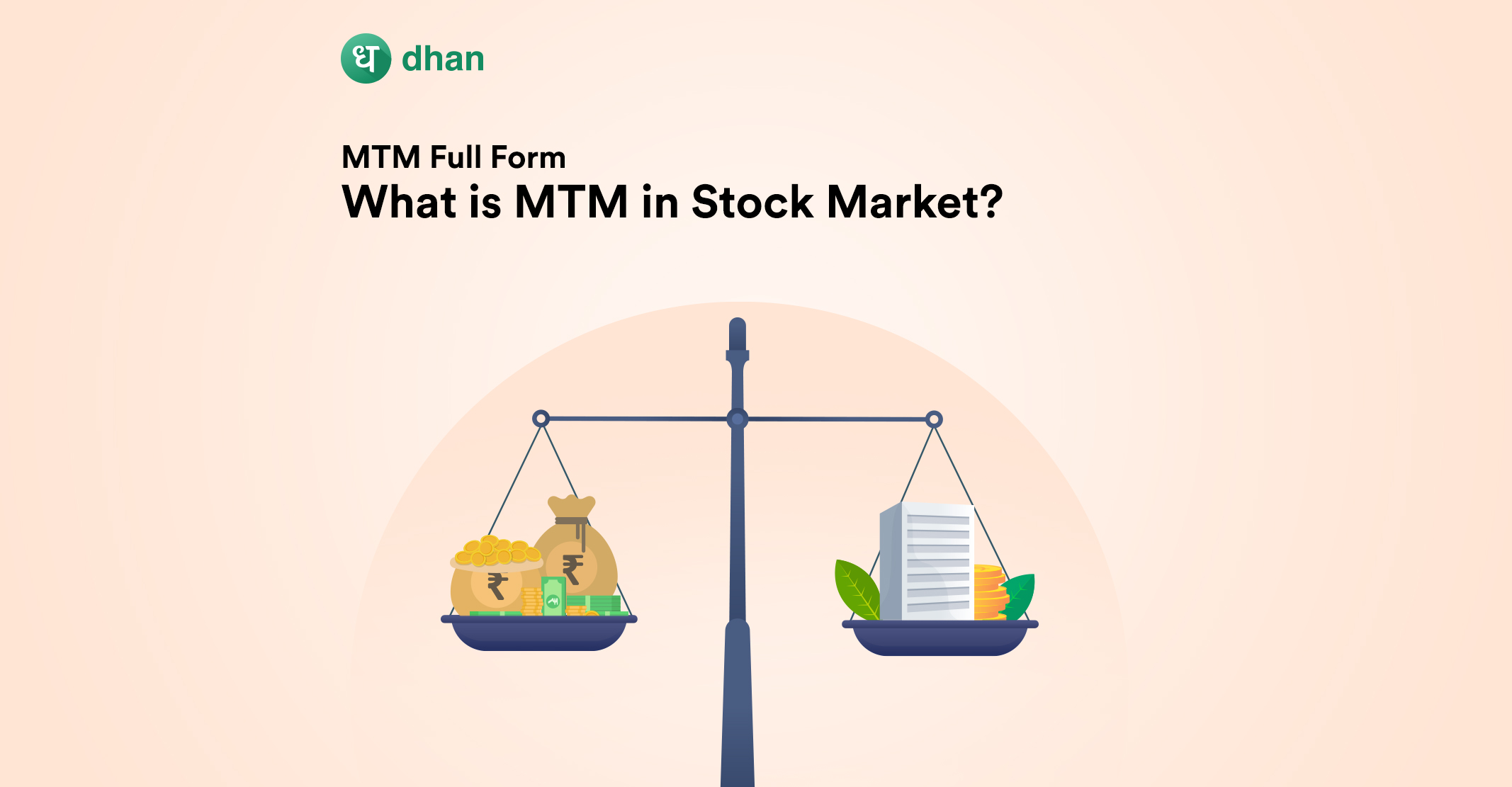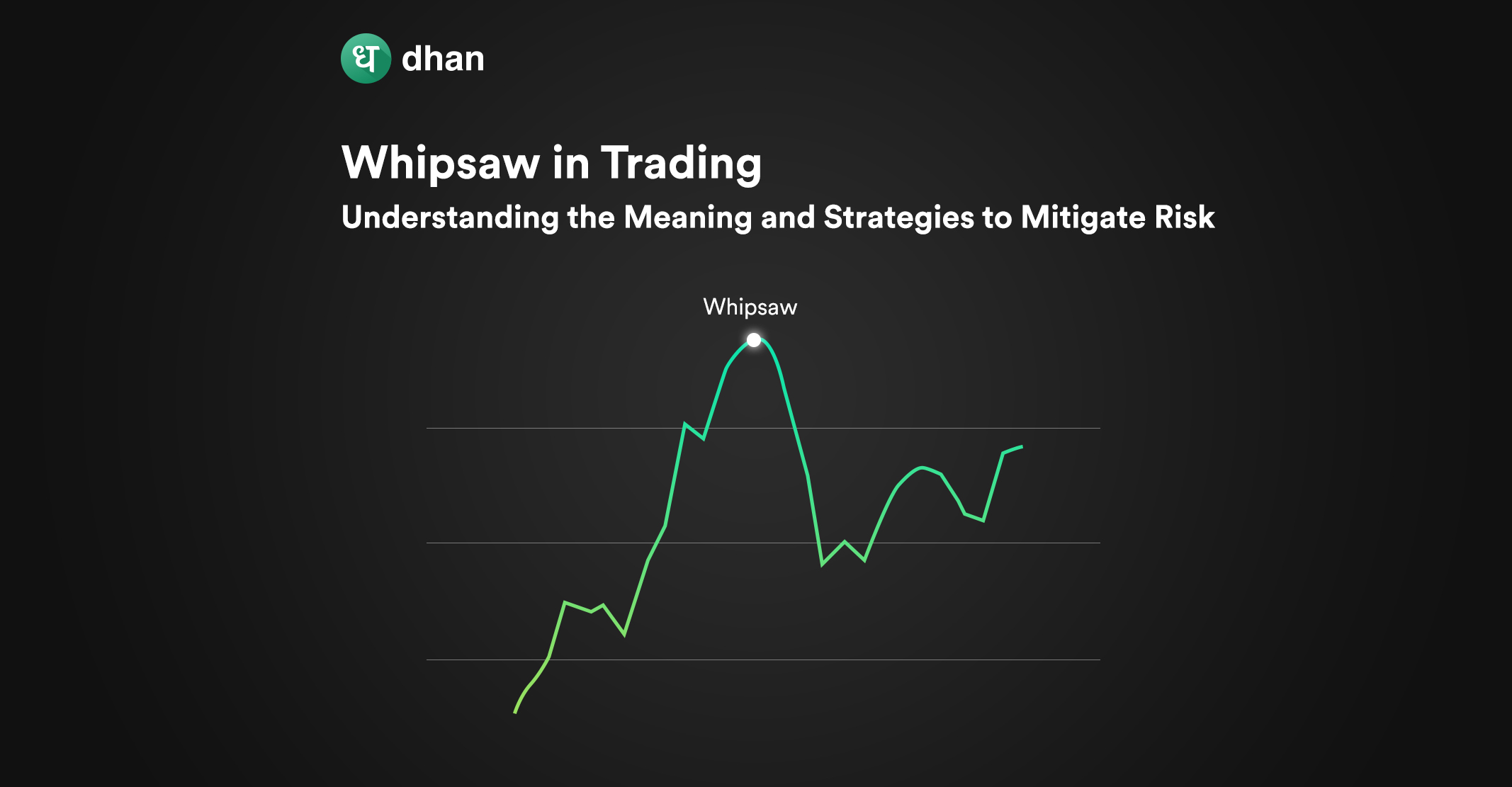To trade commodities, there are details like MCX margin and commodity market lot size that you must be aware of and that is what we are going to cover in this article. Let’s start with the margin first, because it is crucial to taking any commodity trading position.
What is MCX Margin?
Traditionally speaking, a margin in the share market is the leverage you take beyond your capital to trade in any commodity.
Margin trading is a way in which you can acquire a loan from your broker, using your assets as collateral. The loan amount is used to finance the trades.
That said, the margin in commodity trading is relatively different. You need to have a minimum amount of money in your trading account before you go long or short in futures and options for commodities.
You can think of this minimum amount as a good faith deposit you make to control a large position and typically, it’s a fraction of the total contract value.
The rest? It’s taken care of by the broker. When you see 3 or 4x leverage, it means that you need to deposit just 1/3rd or 1/4th of the total contract amount to control the position.
The Multi Commodity Exchange (MCX) also operates in the same way for margin requirements, with an initial amount analogous to the initial margin.
MCX Margin List
MCX margin list is a collective group of all margins that may change periodically but is applicable as one across brokers. This includes:
- Initial Margin
- Tender Margin
- Additional Long Margin
- Additional Short Margin
- Special Long Margin
- Special Short Margin
- Delivery Margin
- Extreme Loss Margin
1. Initial Margin
The initial margin is the minimum amount of funds or collateral that you as a trader are required to deposit when entering a futures or options contract.
It acts as a form of security to cover potential losses and ensure the financial integrity of the market.
The initial margin is determined by the exchange and is typically a percentage of the contract value.
2. Tender Margin
The tender margin is a specific type of margin applicable to tender-based contracts on the MCX.
When a market participant submits a tender for physical delivery of the underlying commodity, they are required to deposit the tender margin.
It represents the amount of funds or collateral needed to participate in the tender process and is typically a percentage of the tender value.
The tender period on MCX typically starts 5 days before a contract expires.
Read 👉 MCX Trading Holidays 2023
3. Additional Long Margin
The additional long margin is an additional margin imposed by the MCX on market participants who hold long positions (buyers) in futures contracts beyond a certain threshold specified by the exchange.
It is designed to mitigate the risks associated with large positions and market volatility. The additional long margin is usually calculated as a percentage of the open position’s value.
4. Additional Short Margin
Similar to the additional long margin, the additional short margin is an extra margin imposed by the MCX on market participants who hold short positions (sellers) in futures contracts beyond a specific threshold determined by the exchange.
It serves the purpose of managing risks arising from large positions and market fluctuations. The additional short margin is typically calculated as a percentage of the open position’s value.
5. Special Long Margin (SLM)
The special long margin refers to a unique margin requirement imposed by the MCX under specific circumstances.
It may be applied when there are extraordinary market conditions, increased volatility, or other risk factors identified by the exchange.
The SLM is an additional amount of funds or collateral that long position holders must deposit to address the heightened risk.
6. Special Short Margin (SSM)
Similar to the special long margin, the special short margin is a specific margin requirement enforced by the MCX during extraordinary market conditions or increased volatility that affect short position holders.
It represents an additional deposit of funds or collateral that sellers must make to account for the heightened risk levels.
7. Delivery Margin
The delivery margin is a margin imposed on market participants who intend to take or make physical delivery of the underlying commodity upon the expiration of a futures contract.
It ensures that participants have sufficient funds or collateral to fulfill their delivery obligations.
The delivery margin is typically a percentage of the contract value and is separate from other margins required during the contract’s holding period.
8. Extreme Loss Margin (ELM)
An Extreme Loss Margin is imposed to cover unexpected losses that go above and beyond MCX’s defined threshold.
It is levied as an addition to the SPAN margin and initial margin requirements as a risk management tool not just for you as a trader but all market participants.
It is important to know these margin details as it helps you to know the capital requirement and plan risk management.
For instance, some contracts will have a higher initial margin while others may carry a special margin during unexpected circumstances.
In the end, it all depends on your chosen commodity, and expiration date of the contract, and on which side of the trade you are.
Commodity Broker Margin for MCX
Commodities are traded in the futures and options market and without a broker, you won’t be able to enter the market.
Brokers act as the interface between exchanges and retail participants. Thus, they ensure that the guidelines for margins by MCX are upheld at all times.
All you need is to open a commodity trading account to access this feature. A commodity account has to be funded with an initial deposit, known as an initial margin, used to trade commodity futures & options.
Different commodities have different margin requirements. Also, the margin differs based on the expiry of the contract for that commodity. There is a wide range of low to high-margin commodity derivatives.
Leverage taken via a margin account can amplify your gains or losses. The broker may ask you to pay the difference between the initial margin and the maintenance margin, which would be the latest price of the contract.
If you fail to make up the difference, then something known as a “margin call” happens. Here, the broker will ask you to fund your account to cover the difference in margins.
By the way, Dhan has this cool feature for building Commodity Trading Strategies. Check out the following video to know more!
Lot Size in MCX
Just like the margin requirements, MCX also has lot sizes for different commodities. For instance, the gold MCX lot size is 10 kg. The crude lot size MCX is 100 barrels and the silver MCX lot size is 30 kg.
As a trader, you must keep the lot sizes in mind to know your cost of trade and profit or loss potential. Let’s understand it better.
If you are purchasing 1 lot of gold, the approximate cost would be equal to the 1kg gold price, transaction costs, and any other charges.
The total contract value would be ~₹59,49,500 but with leverage, you’ll need to deposit an initial margin that’s ~1/10th.
Lot size helps you calculate the total value of your trade and gives you vital information on how many multiples you can trade on. Lot sizes and margins play an important role in commodities trading.
You can easily get commodity market lot size information on our website or on the official site of the multi-commodity exchange.
MCX margin list and lot size help you to know the upfront cost of the trade and plan your trades effectively.
Conclusion
Depositing the margin amount can help you initiate a position in commodity f&o. Furthermore, knowing the exact types of margin on MCX can ensure that you’re prepared for all scenarios and avoid being margin-called.
If you want more margin for commodity trading, Dhan has something just for you. Check out this feature called Pledge Margin Benefit via the video below.
FAQs
Q. What is the margin in commodities?
A margin is the minimum amount of money required to be deposited into a trading account to enter a long or short position in commodity futures or options.
Q. What is margin required in MCX?
The amount of margin money you need to trade on MCX depends on what commodity or contract you’re trading. It’s not just one number but a combination of different margins like the initial one, the tender margin, and others that add up to the total amount you need to have in your account.
Q. What is tender margin in MCX?
The tender margin in MCX is the amount of money (or collateral) a trader must deposit when submitting a tender for the physical delivery of the underlying commodity. It is typically calculated as a percentage of the tender value.
Q. What is tender period margin in commodity market?
The tender period margin is the money (or collateral) you need to get the actual commodity when a contract ends, and this “tender period” usually begins five days before the contract expires.



